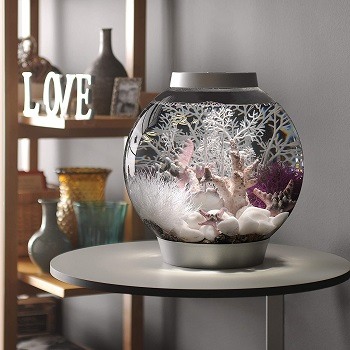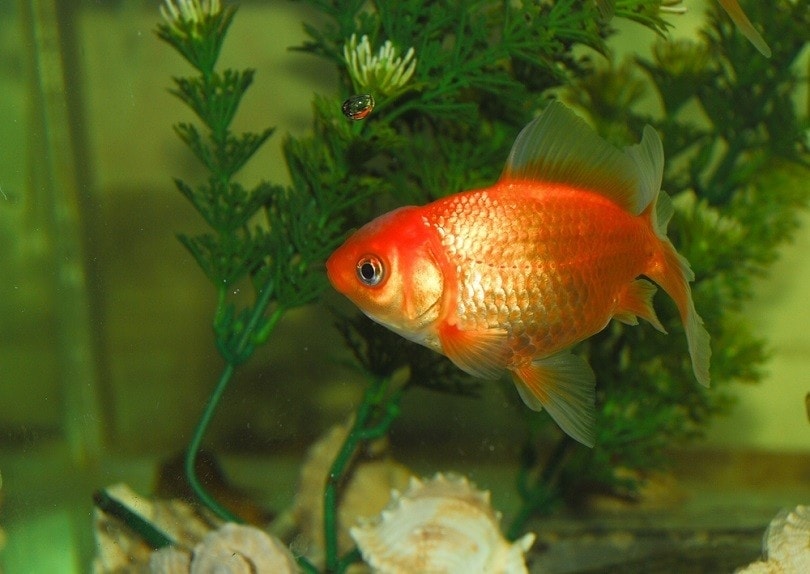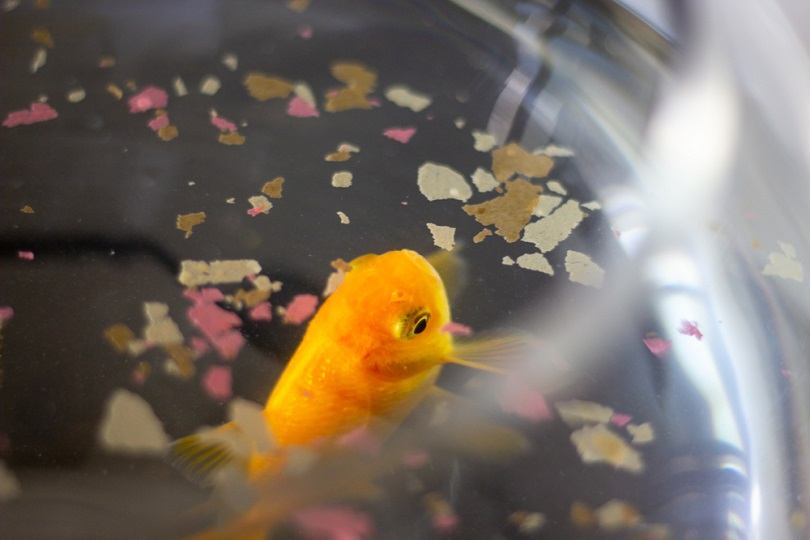Is Your Goldfish Turning White? 8 Reasons Why & What to Do
Updated on
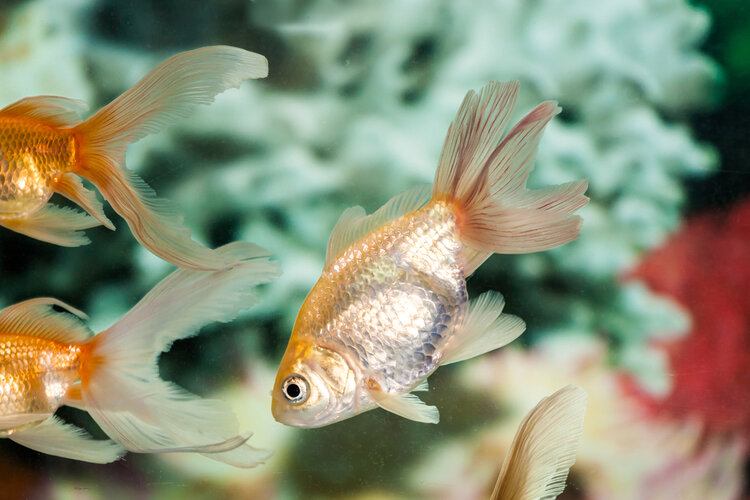
It can be alarming to notice that your goldfish has suddenly begun to change colors. It isn’t completely uncommon for goldfish to shift to a white coloration, especially if they start off orange or gold. There are a lot of reasons that goldfish might turn white, and some of them are of concern and will require interventions to ensure the health and well-being of your goldfish. Here’s what you need to know if your goldfish has started to turn white.
The 8 Reasons Your Goldfish Is Turning White
1. pH Problems
The pH of your goldfish’s tank water can directly impact their coloration. If the pH of the water is out of whack, then your goldfish’s scales may begin to shift to white. In fact, pH is the most common water quality-related cause of goldfish turning white. Goldfish need a water pH level between 6.5 and 7.5, although they are hardy fish that can thrive in slightly higher pH levels. Ideally, you should aim to keep the pH in this range, though. Long-term exposure to improper pH levels can lead to discoloration of your fish, as well as stress and illness.
2. Chlorine Exposure
Chlorine is present in most tap water in the United States, so it’s an extremely common contaminant in fish tanks. There are lots of products on the market that will eliminate the dangers that chlorine poses to your fish. If you’re using tap water in your goldfish’s tank, then you need to be using a dechlorinator. Exposure to chlorine can lead to the bleaching of your goldfish’s scales, leading to a white coloration, as well as a host of health issues.

3. Sunlight
If your goldfish is receiving too much or too little sunlight, they may begin to turn white. Powerful tank lights can support healthy coloration in your goldfish, but many of the lights that come with tank kits aren’t strong enough to fully replicate natural sunlight. Without strong tank lighting, you may need to consider placing your tank where it will receive natural light. On the other hand, if your goldfish is exposed to strong lighting and lots of natural light, then they may begin to turn white. Try to aim for a balanced day/night lighting schedule to keep your goldfish healthy.
4. Improper Diet
Goldfish are omnivores that need a varied diet to maintain their health. Some foods can also help ensure the brilliant coloration of your fish. Without proper nutrition, your goldfish may begin to turn white. Aim for a high-quality pellet food that is made specifically for goldfish to ensure your fish receives an appropriate diet. You can also supplement their diet with treats like bloodworms, daphnia, leafy green veggies, bananas, and apples. Foods containing high levels of canthaxanthin can help support bright colors in goldfish.
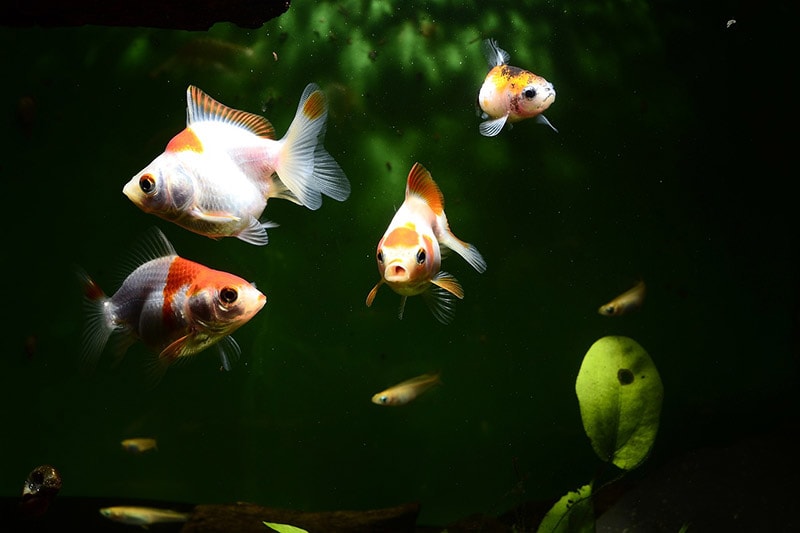
5. Genetics
Some goldfish are white or will turn white and it doesn’t mean anything at all. Genetics plays a major role in the color development of your goldfish, and it’s possible that your fish is simply predisposed to being white in color. It’s unlikely that your goldfish will start off black and turn completely white, but you may notice their color lightening to white throughout their life.
6. Age
Just like with people’s hair, goldfish can lose color as they age. If your goldfish is multiple years old and has started to turn white with no symptoms of illness or water parameter problems, then it’s possible that your goldfish is simply lightening with age. Multiple factors will enhance this color change, including light exposure, diet, and genetics, but you may not know that your goldfish is predisposed to this age-related color change until it begins to happen.

7. Illness or Parasites
There are a handful of illnesses and parasites that may lead to a white coloration for your goldfish. Generalized white coloration development isn’t associated with a specific disease or illness, though. With ich and Malawi bloat, white spots may develop on your goldfish. Fungal infections can also cause white patches to appear on your goldfish’s scales and fins. With specific illnesses, it’s likely that you’ll notice white patches or patterns appearing as opposed to your fish completely beginning to turn white.
8. Stress
Fish are susceptible to experiencing stress related to their health or environment. Bullying, poor water quality, poor diet, and illnesses can all cause a great amount of stress for your goldfish. If they are experiencing stress, your goldfish may begin to lose their bright colors. Dullness and color loss can be symptoms of severe stress, which means you’ll need to evaluate what may be the cause of your fish’s stress and remedy it. Oftentimes, reversing the cause of the stress will allow your goldfish to brighten their colors.

Conclusion
Turning white isn’t necessarily a cause for concern, and white is a normal color that appears in goldfish. However, if you have a fish that has been one color for a long time and suddenly begins to lighten, it’s a good idea to evaluate what could be causing your fish’s color to change. It’s possible that there is a natural process occurring, like aging or genetic intervention, but it’s also possible that there is a problem with your water quality, tank setup, or fish’s diet.
Featured Image Credit to: RobinsonThomas, Shutterstock


